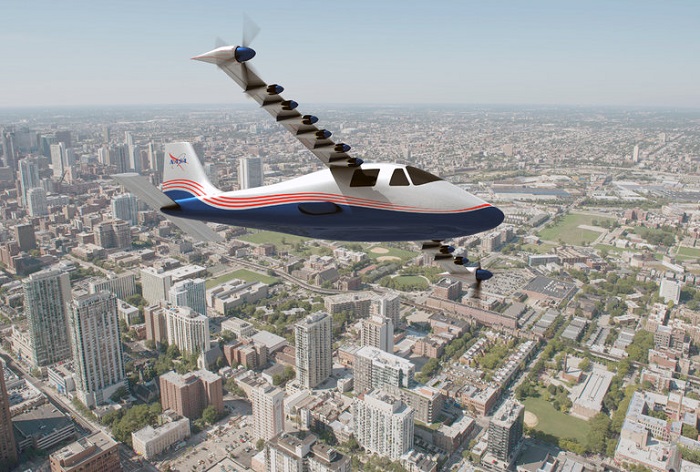NASA unveils plans for electric-powered plane

“The X-57 will take the first giant step in opening a new era of aviation,” Mr. Bolden declared.
The steps taken by NASA will not translate into all-electric cross-country jetliners. But the agency hopes the technology can be incorporated into smaller, general aviation and commuter aircraft some years from now.
The X-57 will look more like a Cessna, unlike some of NASA’s earlier sleek, futuristic X-planes. Its cruising speed might hit 175 miles per hour. Its wings, however, will be unique — far skinnier than usual and embedded with 14 motors.
“The problem with traditional aircraft design is you have to size the wings so that you have safe takeoff and landing speeds, and so the wing tends to end up bigger than you need for cruise flight,” said Sean Clarke, co-principal investigator for the project at NASA’s Armstrong Flight Research Center in Edwards, Calif.
For the X-57, the NASA researchers are designing narrower wings that are efficient during cruise flight, powered by two 60-kilowatt electric motors at the wingtips that spin five-foot-wide propellers.
For takeoff and landing, 12 smaller 9-kilowatt motors powering two-foot-wide propellers will kick in to blow extra air over the skinny wings to generate the necessary lift. In flight, the smaller propellers are folded away.
NASA has already purchased the Italian-designed Tecnam P2006T twin-engine four-seat aircraft that it will transform into the X-57. In the first step, NASA will replace the gasoline-powered motors with electric ones, aiming for takeoff in about a year. Swapping out the wing will take another one to two years, Mr. Clarke estimated.
The X-plane designations are handed out by the United States Air Force for experimental, cutting edge aircraft starting with the X-1 that broke the sound barrier in 1947. NASA’s last X-plane effort, more than a decade ago, was the X-43A, a pilotless black dart that accelerated to almost 7,000 m.p.h., which set the record for a jet-powered aircraft.
The NASA researchers have nicknamed the new plane “Maxwell,” after James Clark Maxwell, a 19th-century Scottish physicist who came up with the basic equations underlying electromagnetism.
The X-57 is far from the first electric airplane, and a solar-powered electric airplane called Solar Impulse is currently making a series of flights that will take it around the world. But Solar Impulse cruises at 30 to 40 m.p.h., of which Mr. Clarke said, “I don’t think anyone would classify as high speed.”
At 175 m.p.h., the X-57 would be as fast as the original P2006T and other similar general aviation planes. “That’s a speed that could enable much greater market share for a technology like this,” Mr. Clarke said.
Operational costs could be cut by as much as 40 percent, and electric motors are much quieter.
The design does not overcome the shortcomings of electric propulsion. Its 800 pounds of batteries will replace the rear two passenger seats, and the seat next to the pilot will be replaced with instrumentation, leaving space for only the pilot and no passengers. It can stay aloft for only about one hour.
Mr. Clarke said the technology could be scaled upward for commuter or regional airliners, and NASA is investigating using fuel cells rather than batteries to provide the electricity. But limits in the speed of propeller-driven aircraft means they are unlikely for cross-country airline flights. “I think all-electric would be a stretch for jetliners,” he said.
But NASA has four other X-plane projects in the pipeline, part of a 10-year aviation research program proposed by the Obama administration in February. “This will be NASA’s moonshot for aviation,” Mr. Bolden said.
That includes a supersonic airplane that would not generate supersonic booms. “Talking about going around the world in six hours or going from Dubai in New York in an hour,” Mr. Bolden said. “That’s absolutely incredible.”















































